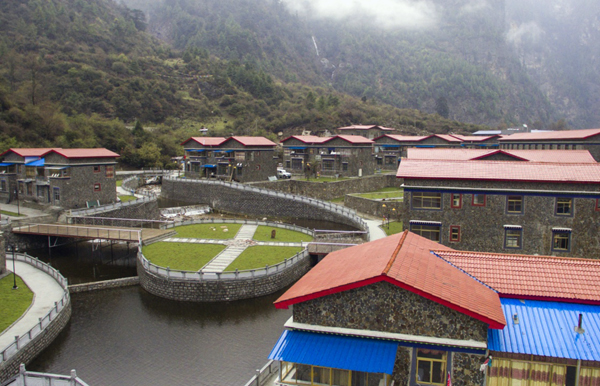On 23rd October, China passed a new border law. It will come into force from January 1, 2022. This law becomes significant as it is passed amid the ongoing standoff with India. It is designed to “regulate, strengthen, protect and stabilise border security”. China’s law also signals China’s possible strategy about its borders in the upcoming time.
Provisions of China’s New Border Law
This law points out major focus areas in border management. It is a “… new law on protection and exploitation of country’s land border” as reported by Xinhua news.
1. To Safeguard Territory At Any Cost
The law puts the responsibility for border management on the Chinese military and military police. It states that the forces can take any measure to safeguard territorial integrity. Thus, is tries to justify any aggressive military action taken by China under the name of safeguarding territorial integrity.
2. Combining Military Defence of Land Border With Social And Economic Development
The law formalises the process of combining military defence with the social and economic development of the border areas. It aims to “strengthen PLA’s policy to work closely with civilians staying in border areas. These areas include Tibetan villages bordering India and Bhutan.
It actually tries to cover China’s attempts to put forward local civilians as their first line of defence. This is because of the already known difficulties that are being faced by Chinese troops in this terrain.
3. Powers To Close And Open Borders
The law authorises forces to block borders against any potential threat. As per the reports, the law allows creating blockades and using “police apparatus and weapons against illegal crosses”. It is aimed at checking “illegal crossers”.
The biggest reason behind this anti-infiltration move is the fear of spill over effect from Taliban controlled Afghanistan. Afghanistan has once again become a hotbed for radical Islamist ideology and terrorism. China doesn’t want these to enter its territory especially the Xinjiang province which shares a border with Afghanistan and Central Asia.
Another reason can be checking the spread of Covid-19 from South-East Asia into China. What can be more ironic than the country that itself originated this pandemic is putting barricades against it?
4. Upgrading Border Infrastructure
China has built a vast network of road, rail and air transport in border areas. This law brings a renewed focus on infrastructure development. It also aims to upgrade is border villages. China has already established more than 600 such villages in Tibet.
General Officer commanding of eastern command of Indian Army recently stated that China is establishing such “dual villages” in border areas. These can act as military bases for China in times of war. The law talks about states nurture and improves their “supporting capacity”. This clearly shows that these villages are actually Chinese military camps under the disguise of a civilian settlement.
5. Resolving Border Disputes
The new law says that long-standing border disputes will be resolved through negotiations. The principles of “equality, mutual trust and friendly consultations” would be followed.
The real Chinese intentions are exactly the opposite especially with respect to borders with India and Bhutan. China has signed border agreements with most of its neighbours except India and Bhutan. The Doklam standoff in 2017 and the ongoing standoff in Ladakh since last year shows that China wants to settle these borders with the use of force and not through negotiations.
Impact On India
The timing of this law is important. It came within two weeks of breaking down of 13th round of corps commander level talks. Thus, it is another attempt to blame India and show Chinese “sincerity” towards solving border dispute.
The law also shown China’s growing aggression. China has given extensive powers to its forces. It is also accelerating use of civilians and civil infrastructure for military use which is a cause of concern.
As per some observers, the law formalises China’s recent actions on disputed territories with India and Bhutan. As we discussed above, China is yet to finalise border agreements with these two nations. Thus, it can be a new step by China to solve these disputes the way it wants.
According to India’s former ambassador to China Gautam Bambawale the law will not change the realities on the ground. The law has a lot of verbiage and a lot of hot air.
When it comes to infrastructure development, social and economic development, India has the Border Area Development Programme (BADP) under the Ministry of Home Affairs.


















